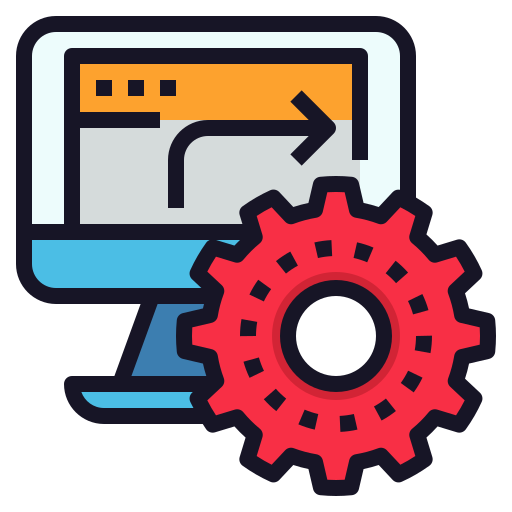


Test Automation
Introduction
Test automation is a vital aspect of software development that involves the use of specialized tools and techniques to automate the execution of test cases. It has become an integral part of the software development process, owing to its ability to save time and effort while ensuring better quality and efficiency.
Why Test Automation?
Manual testing requires significant human resources, time, and effort. Additionally, it is prone to errors due to human limitations such as fatigue and oversight. This is where test automation comes in – by automating repetitive tasks and reducing human intervention, it not only saves time but also ensures more accurate results.
Moreover, with the increasing complexity and frequency of software releases, manual testing becomes even more challenging and time-consuming. Test automation allows for faster testing and quicker feedback, enabling swift bug detection and resolution.
Types of Test Automation
There are various types of test automation, each serving a specific purpose in the software development lifecycle. Some of the commonly used ones include:
- Unit Testing: This involves testing individual units or components of code to ensure they function as intended.
- Integration Testing: It tests how different modules or systems work together and ensures that they can communicate effectively.
- Functional Testing: This type of testing evaluates whether the software meets its specified requirements and performs expected functions accurately.
- Regression Testing: It is done to ensure that changes made do not have any unintended impacts on existing features.
- Performance Testing: This involves testing the speed, stability, and scalability of the software under expected workloads.
Benefits of Test Automation
- Faster Time-to-Market: With automated testing, developers can release new features and updates more frequently without worrying about potential bugs or errors.
- Increased Accuracy: Test automation eliminates human error and ensures consistent test results every time, leading to better quality assurance.
- Cost-Efficient: While there is an initial investment in setting up test automation, in the long run, it proves to be cost-efficient by saving time and resources spent on manual testing.
- Better Coverage: Automated tests can cover a larger number of scenarios and cases compared to manual testing, thus providing better coverage and increasing test effectiveness.
Challenges of Test Automation
While test automation has numerous benefits, it also comes with its set of challenges. Some common hurdles faced during implementation include:
- Initial Investment: Setting up a robust test automation framework requires an initial investment in tools and resources, making it expensive for smaller teams or projects.
- Maintenance Efforts: Automated tests need to be maintained regularly to ensure they are up-to-date with the latest changes in the software. This can require significant efforts and resources.
- Expertise Required: Test automation requires specialized skills and knowledge of various tools and frameworks, which may not be readily available within a team.
Conclusion
Test automation is an essential part of software development, offering numerous benefits such as increased efficiency, accuracy, and faster time-to-market. However, it also comes with its set of challenges that need to be addressed for successful implementation. With the right approach and tools, test automation can significantly improve the quality and speed of software development. So, it is crucial for organizations to invest in test automation to ensure their products meet the highest standards of quality and performance.
Additional Resources
- The Benefits and Challenges of Test Automation
- Test Automation: The What, Why & How
- Types of Test Automation
- Automation Testing: The Ultimate Guide
- Automation Testing vs. Manual Testing: A Comprehensive Comparison
- The Future of Test Automation in Software Development
- Top 5 Test Automation Tools
- The Importance of Test Automation in Agile Development
Test automation continues to evolve and improve as technology advances. It is essential for organizations to stay updated with the latest trends and tools in test automation to ensure their software meets the highest standards of quality. Additionally, it is crucial for teams to continuously evaluate their test automation strategies and make necessary adjustments to overcome any challenges faced.
Moreover, with the rise of Agile development methodologies, test automation has become even more critical. It enables teams to keep up with the fast-paced development cycles and deliver high-quality software in a timely manner. As technology continues to advance, we can expect test automation to become even more efficient and integral to the software development process. So, it is crucial for organizations to embrace test automation and make it an essential part of their quality assurance strategies. ## Keep Learning
To learn more about test automation, here are some additional resources:
- Test Automation University – An online platform offering free courses on various topics related to test automation.
- SeleniumHQ – A popular open-source tool for automating web applications.
- Cypress – An open-source test automation tool specifically designed for modern web applications.
- Robot Framework – A generic test automation framework used for acceptance testing and acceptance test-driven development (ATDD).
- Appium – An open-source tool for automating mobile applications on different platforms. So, keep exploring and learning about the latest developments in test automation to stay ahead in the fast-paced world of software development!
Happy Testing!
For further information please call Jim Brown on 0121 803 8808 or email Jim@onquautomation.com
